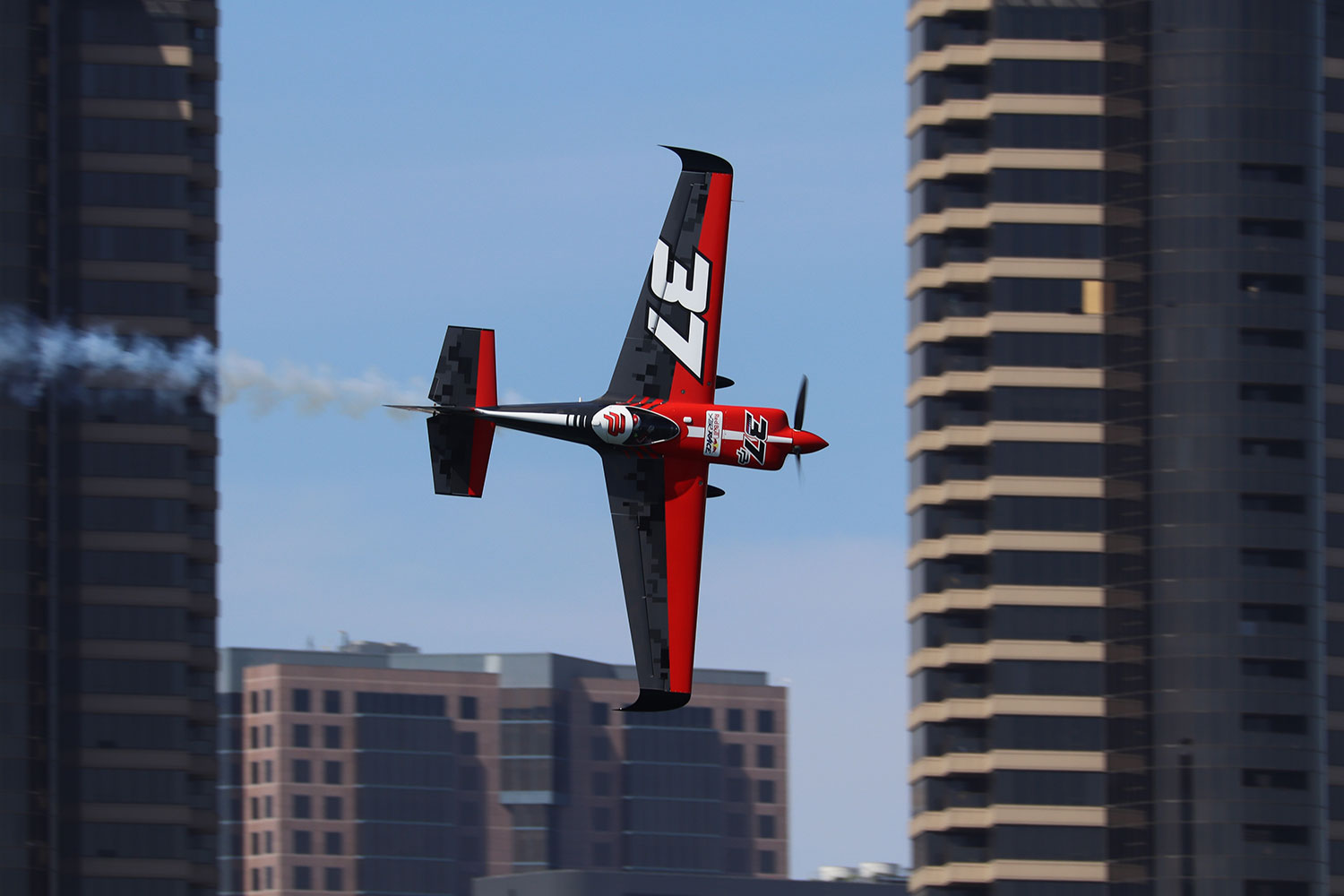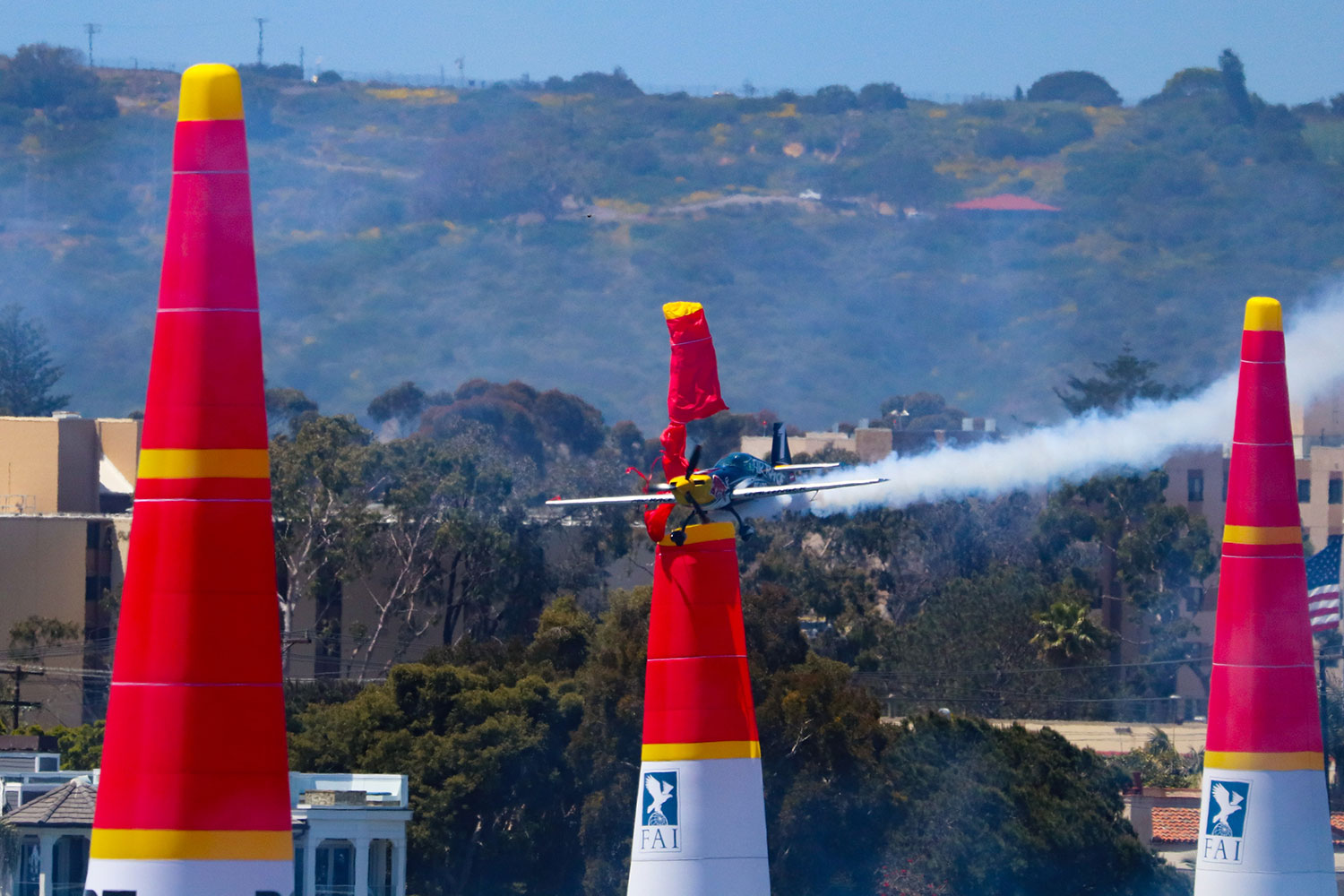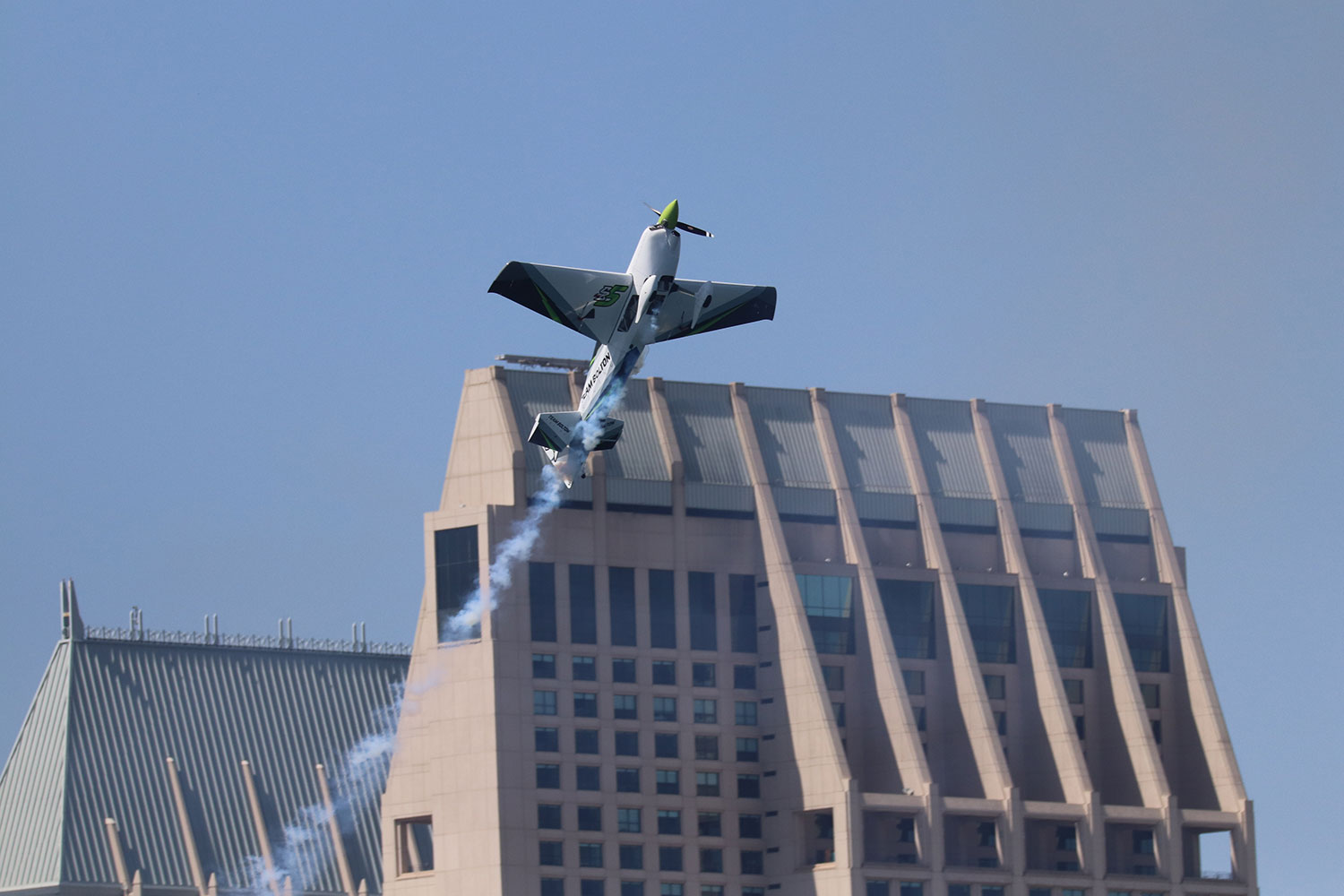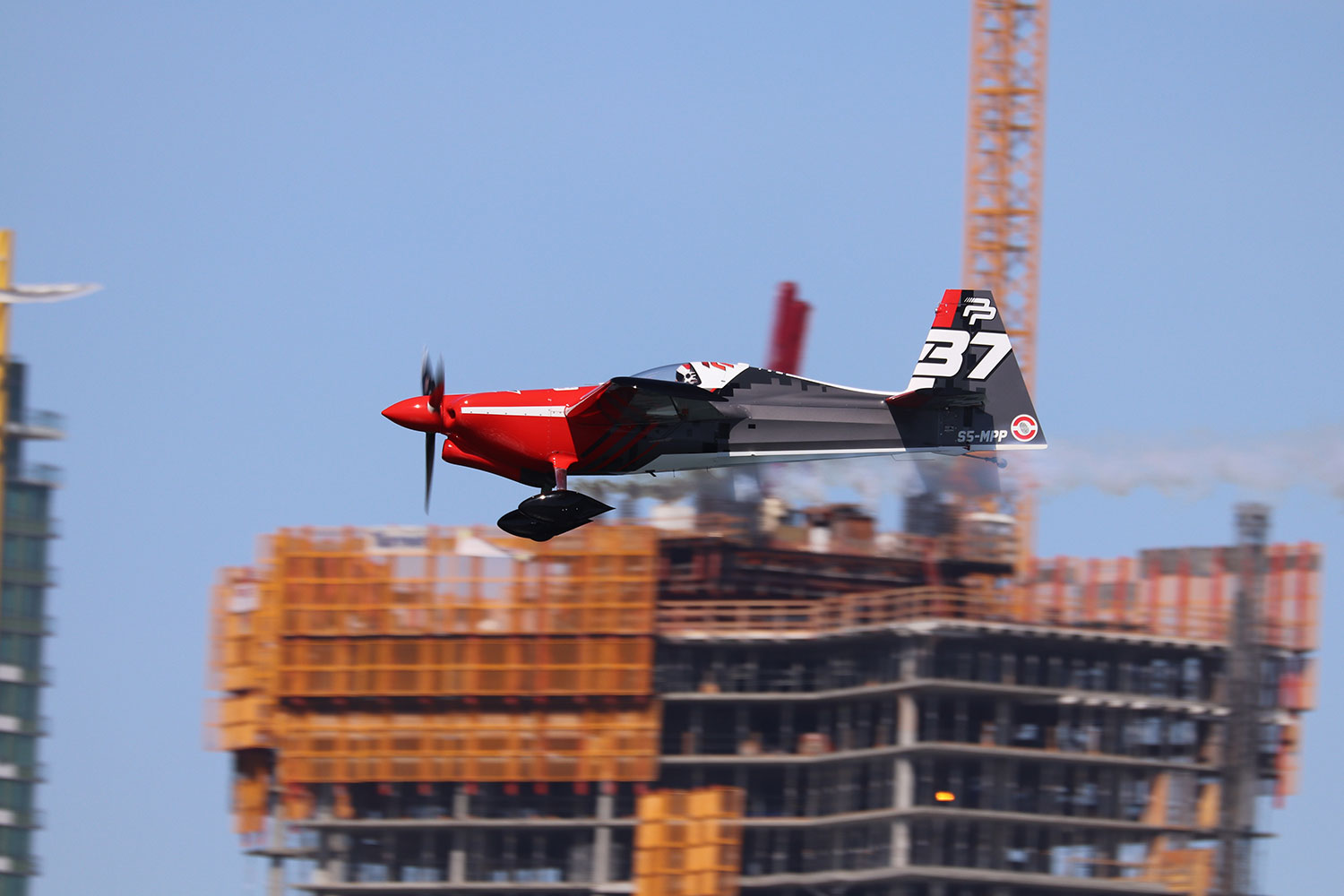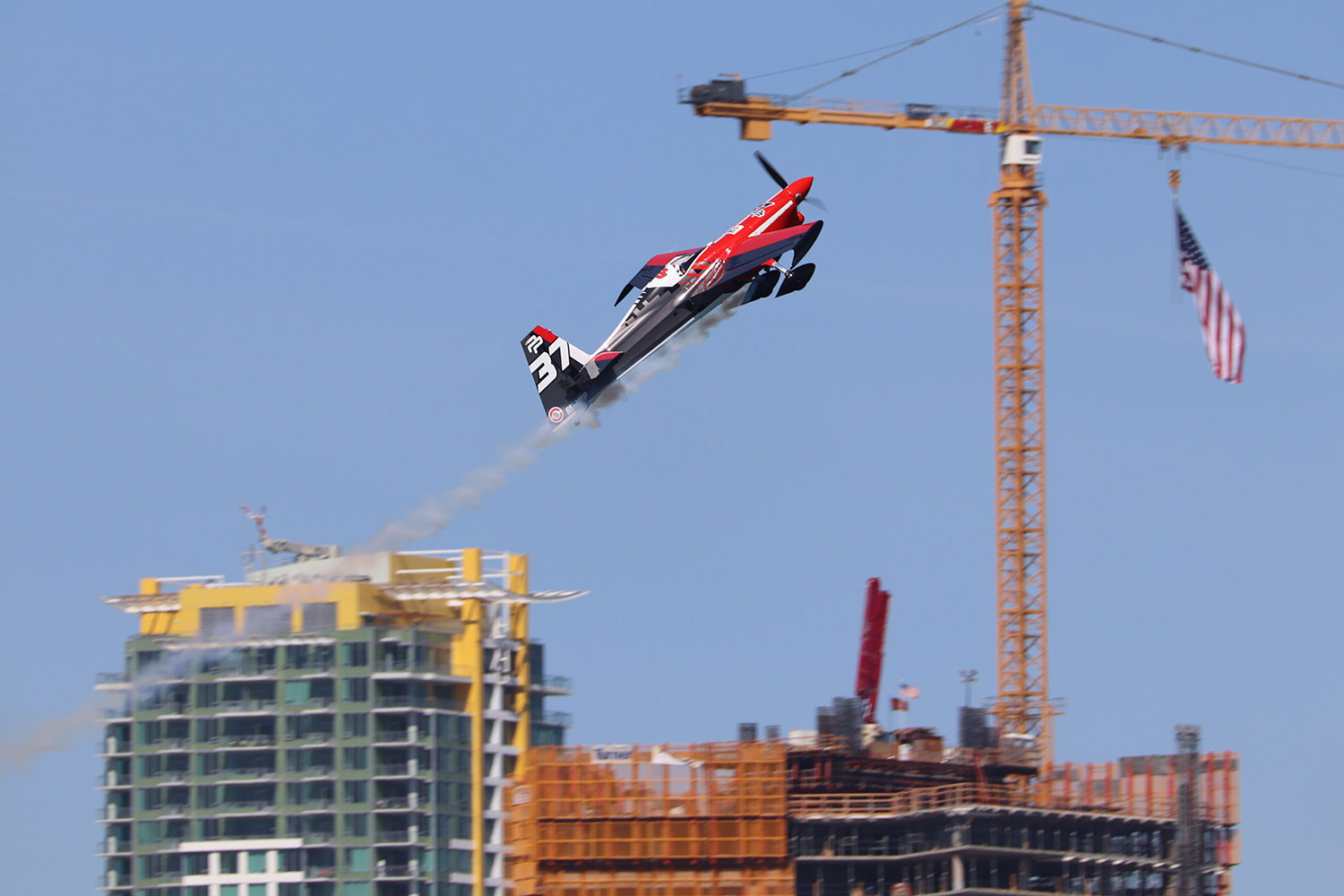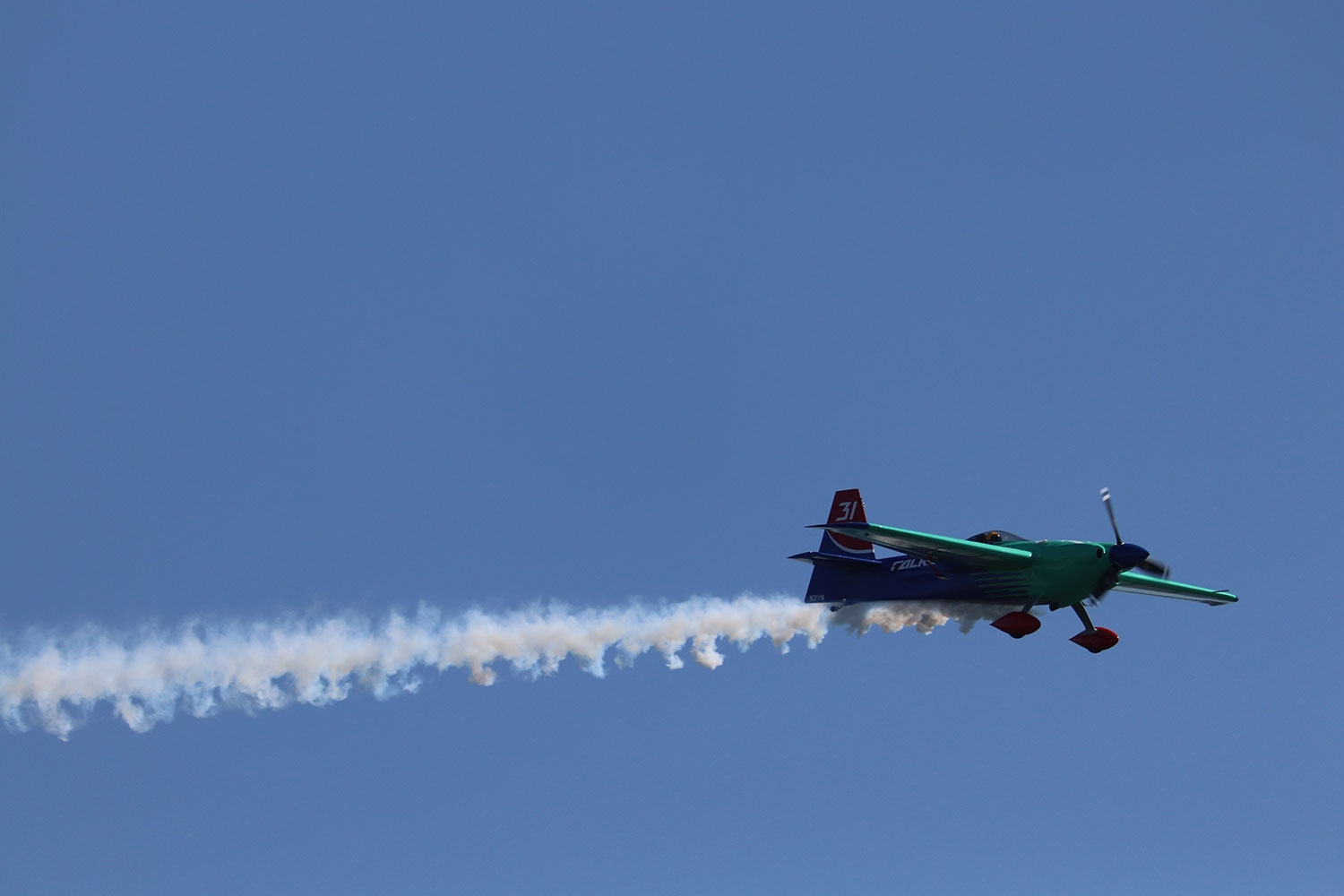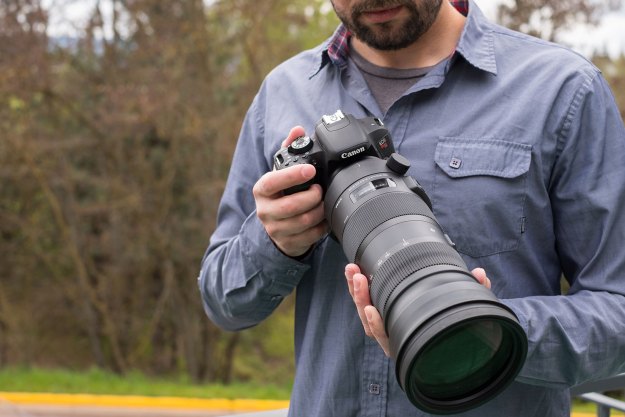
“With superb performance and image quality, Sigma’s 150-600mm Sports lens is an excellent super-telephoto zoom.”
- Long range
- Fully dust and splash-proof
- Great stabilization and AF performance
- Great image quality
- Lots of customization and convenience options
- Big, heavy compared to peers
- Slow aperture
- Cheaper Contemporary model better for average user
There’s a simple, age-old adage in photography: get closer. But, there are times when getting closer is impractical, not allowed, or simply unsafe. You can’t very well shoot a football game from the center of the field, and unless you’re blessed with a particular brand of courage (which some would label stupidity), you likely won’t be photographing a grizzly bear from within arm’s reach. So when you can’t get closer, you go longer, with a super-telephoto lens like the Sigma 150-600mm F5-6.3 DG OS HSM Sports.
Affordable, not cheap
Sigma has long been known for making affordable alternatives to first-party lenses for Canon and Nikon DSLRs, but in more recent years the company has diversified into higher-end (but still relatively inexpensive) optics. Its products are now spread across three lines: Contemporary, Sports, and Art, each geared for a different demographic of photographer.
The 150-600mm F5-6.3 Sports (available in Canon, Nikon, and Sigma mounts) that we tested has a sibling in the Contemporary line that was announced alongside it. Both share the same focal length and variable maximum aperture, yet at $2,000 (MSRP), the Sports version costs nearly twice as much as the Contemporary. Why? It’s fully weather sealed, features a much more robust build quality, and has a different optical formula with an additional low-dispersion element.
Not too long ago, photographers would have balked at the idea of opening their wallets to the tune of two grand for a Sigma lens. Today, things have changed. It’s not by accident that Sigma ended up with two very similar lenses at two very different price points. This is the only way it could maintain its brand image as a “budget” lens maker while also producing glass that competes for business among enthusiasts and professionals. And despite it being the “expensive” version, the 150-600mm Sports is a bargain for professionals who commonly work with long lenses.
Small-aperture super-telephoto zooms used to exist solely in the realm of amateur photography; it simply wasn’t possible to give a lens that much range without sacrificing the level of image quality that higher-end shooters demanded. But before we get into the optics themselves, Sigma has built a lot of features into this lens that should help it appeal to those discerning users.
Despite it being the “expensive” version, the 150-600mm Sports is a bargain for professionals who work with long lenses.
Firstly, it feels very well made. This is a large, heavy lens at nearly one-foot long (with zoom retracted) and 6.3 pounds. However, that weight is indicative of its superior build quality, and is still considerably lighter than large 600mm primes from Canon and Nikon. It has been extensively tested against exposure to dust and moisture, and Sigma says it is even designed to handle ocean saltwater spray.
Additionally, all of the actions are smooth. The zoom and focus rings are large and provide good tactile feedback – even the tripod collar rotates smoothly and locks into place at every 90-degree interval.
In addition to the zoom ring, the lens barrel is designed to be used as a push/pull zoom. This may feel awkward at first, but leaving your left hand near the front of the lens (where there’s a nice indented ring for your fingers) and simply moving it toward or away from the camera body to zoom feels very natural once you get used to it. It helps ensure a steady shooting position, and is even faster than having to reach for the zoom ring every time you want to adjust focal length.
The lens can also be locked at any of the indicated focal lengths (150, 180, 200, 250, 300, 400, 500, or 600mm). This is a lifesaver when shooting at an upward or downward angle when the zoom would otherwise “creep” away from the desired focal length. One interesting detail here is that the lock will automatically disengage if you apply sufficient pressure to the zoom ring or if the lens barrel suffers an impact, protecting the lock mechanism. (The exception to this is when it’s locked in the fully retracted position, at 150mm.)
Trading speed for range
Like a car, lenses can get more range when they’re slow. Of course, we’re not talking about physical distance and speed here, but zoom range and aperture value. With a variable maximum aperture of just f/5-6.3, this is a slow lens, and there’s no way around it. However, anyone wishing the aperture was faster should take note: 150-600mm is a long range, and this lens already has a massive 105mm front filter thread. Increasing the aperture by even a third of a stop would have made the lens impractically big, and likely impractically expensive.
Autofocus speed is blazingly fast, on par with first-party lenses.
Despite the slow aperture, the 150-600mm remains compatible with Sigma’s 1.4x teleconverter, which adds a one-stop penalty, putting the effective aperture range at roughly f/7-f/9. We weren’t able to test the teleconverter, but the tail-end limit of what most modern DSLR autofocus systems can handle is f/8, so using it could have a severe impact on AF performance. But it should still work, at least with plenty of light.
To be sure, buying this lens over the closest comparable Canon or Nikon is a decision that will still involve compromise, but you will have a hard time getting close to 600mm with anything faster than f/5.6 (which is just one-third of a stop brighter than f/6.3). The brightest 600mm lenses available from Canon and Nikon are f/4 primes, and while these lenses are brilliant, their cost is equivalent to the GDP of a small nation (well, ok, it’s about $12,000). Even Sigma’s own 500mm f/4 prime is $6,000.
That’s not to say Sigma doesn’t have competition. Tamron also makes a 150-600mm, and it’s not as if 600mm is some sort of gold standard, either; many photographers may be fine with less. Nikon’s 200-500mm f/5.6E covers most of the range and is actually less expensive at $1,400 (and has a constant maximum aperture, to boot). Canon’s popular 100-400mm f/4.5-5.6L II isn’t terribly far off and is more compact, but also costs exactly the same as the Sigma.
Our point here is that while the slow aperture of the 150-600mm Sports may indeed be cause for concern for some, it is still rather impressive in the context of the competition. If you are considering a Canon 100-400mm, Nikon 80-400mm, or Nikon 200-500mm, the Sigma offers an extremely tempting value proposition.
But it isn’t just the range – this lens is also a great performer.
Solid performance across the board
We took the 150-600mm Sports to San Diego to photograph the Red Bull Air Race. While the lens is full-frame compatible, we had it paired with a Canon EOS Rebel T7i, an APS-C camera with a 1.6x crop factor. That gave us an effective focal length of 240-960mm, which is, frankly, a bit ridiculous. But when it comes to shooting air racing, the more range the better.
Even the best optics in the world would be pointless without accurate focusing, and this is an area where third-party lenses have often lagged behind. With the 150-600mm Sports, however, autofocus speed is blazingly fast. Sigma’s Hyper Sonic Motor (HSM) performed on par with what we would have expected from a Canon brand lens with an ultrasonic drive.
For maximum performance, the 150-600mm features a three-position AF range lock switch. The default setting allows the lens to focus throughout its entire range, from a close-focus distance of 2.6 meters all the way to infinity. But the lens can also be locked to just focus within 2.6 to 10 meters or from 10 meters to infinity. For our purposes, setting the focus limiter to 10-meters-plus was perfect for photographing airplanes, and ensured that if the lens ever did hunt for focus, it wouldn’t waste time searching for something closer than 10 meters away.
The lens also features a Manual Override (MO) position on the AF/MF switch. With the switch set to MO, you can manually interrupt the autofocus at any time just by twisting the focus ring, regardless of focus mode – even in continuous AF.
Now, while we didn’t encounter them, some users have reported front- or back-focusing issues with this lens. This is not terribly uncommon with third-party lenses (and occasionally even first-party ones), and Sigma is aware of this, which is why it offers a USB dock to connect your lens to a computer to fine-tune the focus behavior. If you buy this lens and notice it seems a tad soft, we highly recommend investing in the $60 dock so you can make the necessary adjustments. The dock will also let you customize other features of the lens, such as AF speed and stabilizer settings, and update the lens firmware when needed. It is compatible with many other Sigma lenses, as well.
It may not be cheap at $2,000, but it is very clear where that money is going.
We should also reaffirm that we were shooting outdoors in broad daylight. San Diego being San Diego, we were never at the risk of having too little light. However, shooting on overcast days or in the early morning or late evening would likely result in slower AF performance, thanks to the small maximum aperture. For wildlife photographers looking to capture animal activity at those times, this could be a potential issue.
Beyond focusing, we were equally impressed with Sigma’s optical image stabilization (OS for Optical Stabilizer, in Sigma phrasing). The lens uses a new version of the system that includes an accelerometer for more accurate stabilization when panning. It also offers two modes, one for standard shooting and one for panning (which enables the accelerometer). Additionally, it can be turned off altogether for tripod use.
While we were shooting at sufficiently high shutter speeds – to not have to worry about camera shake leading to blurry photos – stabilization was nevertheless integral to helping us get the shot as we didn’t have a tripod or monopod. Without optical stabilization, we simply wouldn’t have been able to accurately frame the planes as they raced by at over 230 miles per hour.
Great image quality for a superzoom
On a consumer APS-C camera shooting straight to JPEG, it would have been hard to ask for anything more out of this lens. Our subjects were tack sharp, and so long as we did our job right, the lens almost never missed focus. We were equally impressed by the Rebel’s abilities, but without this lens, we wouldn’t have had the opportunity to capture the type of photos we did.
Typically with lenses of this much zoom range, sharpness is sacrificed for versatility, but we did not experience that with the 150-600mm Sports. This is a very different type of telephoto superzoom than what we’re used to at the consumer level. It features three Special Low Dispersion (SLD) elements and two “F” Low Dispersion (FLD) elements, which Sigma claims offer similar performance to fluorite elements often found in other high-end lenses.
Interestingly, while we haven’t shot the Contemporary version, word on the street is that it is also very good optically, despite having a smaller front objective and only one FLD element.
Due to the slow aperture and our desire to maintain a fast shutter speed, we did find ourselves pushing the ISO up to 800 at times. While not a direct knock on lens quality, this does mean some our images were noisier than what we could have gotten with a faster lens. But, again, getting close to 600mm with anything wider than f/5.6 is prohibitively expensive.
We also can’t really speak as to the quality of the lens at the edges of the frame, as we were shooting it on a crop-sensor camera. That said, this lens feels right at home on such cameras. Especially for sports-oriented APS-C models like the Canon 7D Mark II and Nikon D500, the Sigma 150-600mm makes a lot of sense and gives you more reach than what you’d get on a full-frame body.
A note on compatibility with the Nikon D500
When Nikon first launched its DX-format flagship, the D500, there was an initial issue when using it with the 150-600mm Sports lens that would cause images to be overexposed. Sigma quickly issued a firmware update that resolve the issue, but if you are a D500 owner and notice any strange exposure problems with this lens, connect it to your computer via the USB dock and check for a firmware update.
Warranty
Sigma offers a four-year limited warranty on all new lenses, which is competitive with other brands, although not the best. Tamron offers a six-year warranty, while Nikon’s lens warranty is good for five years. On the lower end, Canon covers its lenses for just one year, while Tokina offers two years of coverage.
Our Take
The 150-600mm Sports is an excellent lens. While larger and heavier than its contemporary (no pun intended), it offers incredible value for the price. This is a telephoto superzoom made for experienced photographers, that offers long range without sacrificing image quality and performance. Yes, it’s rather slow at f/5-6.3, but there’s really no way around this, and no other company offers a lens with this much range with a faster aperture.
This lens opened a new world of photographic possibilities for us during the air race, where we pushed its capabilities to their limits and came back with photos we couldn’t have otherwise taken. It performed as close to flawlessly as we could have hoped for, and at no point did we feel let down by being stuck with a third-party lens. It also brought the full potential out of the entry-level EOS Rebel T7i that a kit lens would not be able to, which goes to show that even with a lower-end DSLR, a strong lens can make it shine.
Are there better alternatives?
There are certainly less expensive alternatives, such as Sigma’s $1,090 150-600mm F5-6.3 Contemporary and Tamron’s $1,400 SP 150-600mm f/5-6.3. Both of these are also lighter and more compact than the Sports lens, but only the Sports is fully weather sealed, which is a feature that sports and wildlife shooters will likely find attractive.
Compared to the Contemporary, other unique features of the Sports include the locking tripod collar, the push/pull zoom barrel, a water and oil repellent front element, a metal lens hood, and a slightly closer minimum focus distance of 2.6 meters compared to 2.8 meters. However, the Contemporary is a full two pounds lighter and just over one inch shorter.
How long will it last?
Compared to other lenses in this focal range, the 150-600mm Sports is built very well. It is obviously intended to handle the amount of abuse that working photographers put on their gear, and should hold up over a long period of time. This may be the biggest selling factor of this lens compared to the less expensive Contemporary variant. The four-year warranty is a nice plus, although, again, these longer warranty periods are not uncommon in the lens world.
Should you buy it?
With more than a few super-telephoto zooms to choose from, the average user is likely better off with a lower-cost option, such as Sigma’s Contemporary model. However, the 150-600mm Sports is built for the professional, offering great image quality, exceptional performance, and a rugged, weatherproof design that make it much more appealing to the working photographer. It may not be cheap at $2,000, but it is very clear where that money is going. If you are a sports or wildlife shooter and need a long lens that can handle rugged conditions, you will be very happy with the Sigma 150-600mm F5-6.3 Sports.




